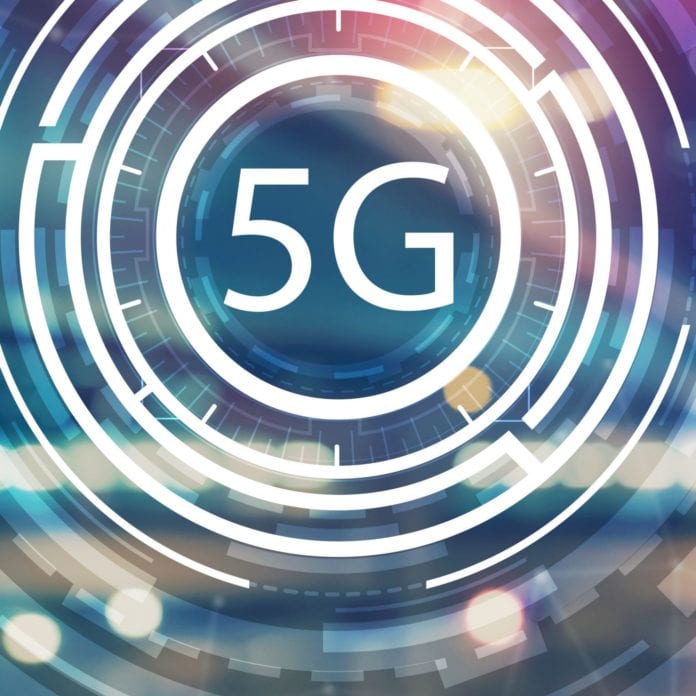In what it calls an “unquestionable first,” Signals Research Group has tested the efficiency of LTE and 5G network schedulers of Ericsson and Nokia in the Verizon and T-Mobile US networks — and concluded that, well, 5G has a some growing up to do when it comes to scheduling.
SRG used the IntelliJudge and WaveJudge test platforms from Sanjole, which was recently acquired by Keysight Technologies, to capture and analyze 5G NR and LTE scheduler performance on a sector-wide basis. Sanjole specializes in over-the-air network testing and according to the company, its WaveJudge 5G test solution is the first over-the-air 5G monitoring solution to give visibility into the interaction between protocol and physical layers in wireless transmissions.
The new report from SRG analyzes how the two vendors’ schedulers allocated resource elements (REs) with Ericsson’s 5G NR Dynamic Spectrum Sharing, 5G NR in a dedicated radio channel supported by Nokia infrastructure, and LTE for both vendors, capturing I/Q data on a per RE basis in order to identify the number of REs used to carry data traffic, scheduling-related information, RAN-specific reference measurement signaling, broadcast messages and unused REs.
In terms of the question of whether 5G NR schedulers can deliver data packets more efficiently than LTE, SRG concludes that “they can, but they currently don’t.” (Remember, this is not spectral efficiency but the efficiency of the schedulers.)
SRG’s testing also continues to reflect DSS as a technically complex way to expand 5G coverage, and one that eats into network resources even as it enables both LTE and 5G to operate in the same spectrum. SRG calls 5G NR DSS a glass that is “half full/half empty.”
“On the one hand, it is quite remarkable to see two generations of wireless technologies used in the same radio channel – not only in the same slot/subframe, but scheduled side-by-side in adjacent REs,” SRG said. “Conversely, there is, and probably always will be, meaningful overhead (LTE overhead impacting DSS and DSS overhead impacting LTE) that reduces the number of REs that can be used to carry data traffic.”
On the bright side, though, SRG said that it is “also evident the long-term prospects for 5G NR scheduling efficiency are compelling relative to what
is possible with LTE.” But overall, SRG said, it is clear that LTE schedulers have been around for more than a decade, while commercial 5G NR data scheduling is the new kid on the block — and it shows.
In terms of how it conducted the first-of-its-kind testing, SRG said that the tests were conducted in late December 2020 and early January 2021. Using IntelliJudge and WaveJudge, it was able to capture LTE and 5G NR scheduling information for the entire cell sector over-the-air. It also used Spirent Communications’ Umetrix data platform to push full-buffer data traffic to its 5G mobile device to capture the 5G NR scheduling information. For LTE, Sanjole’s OTA solution allowed SRG to capture sector-wide performance involving all attached mobile devices.
“We are certain that no one has previously pulled off this endeavor,” SRG wrote, adding that it took six months to pull off the testing and analysis.
“The LTE schedulers from both vendors took top honors relative to what we observed with 5G NR,” SRG said in a preview of the report. SRG didn’t compare the two vendors’ schedulers to each other, but rather to themselves in LTE and 5G. Nokia’s 5G NR scheduler performance followed the LTE schedulers, with a double-digit percentage point drop in scheduler efficiency, compared with LTE. Ericsson’s 5G NR DSS came next, “with another approximate double-digit percentage point drop in scheduler efficiency.”
“We attribute the relative performance differences primarily to DSS scheduling requirements and not to inherent scheduler limitations,” SRG noted, going on to say that “The results also indicate the long-term prospects for better 5G NR scheduler efficiency and overall improved spectral efficiency, thanks to the reduced signaling overhead that 5G NR can provide, not to mention its ability to make better use of available spectrum.”
SRG also hinted at what the OTA network capture and analysis capability could mean for future testing — including being able to do very detailed analysis of the efficacy of new solutions coming to market from Open RAN vendors.
“In addition to including more vendors … we could track the progress of 5G NR DSS and 5G NR and provide unbridled and unfiltered insight into the relative strengths and shortcomings of each vendor’s solution,” SRG said. “Another interesting angle would be to evaluate the capabilities of up-and-coming vendors with solutions that are Open RAN-compliant to see how they compare against each other as well as with the 500-pound gorillas – starting with LTE today and 5G NR tomorrow.”
Mike Thelander, CEO of Signals Research Group, and Emil Olbrich, SRG’s VP of network technology, discuss the testing in the video interview below:

